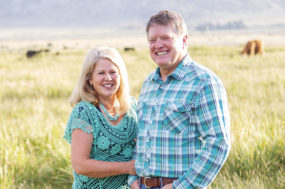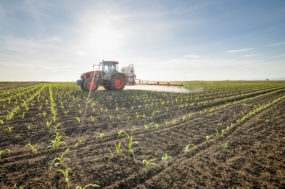“Using Agriculture Conservation Dogs to detect PVY and BRR” was a symposium topic at the annual Idaho Seed Potato Growers seminar in January. Andrea Parish gave the presentation/demonstration, using dogs she trained to sniff out potato diseases. Dogs have been used for many tasks like finding bombs or drugs, or detecting cancer in human patients earlier than medical tests can, but no one was using dogs to detect potato diseases.
It began when Parish wanted to train dogs for search and rescue in Wyoming. “I did a two-week intensive one-on-one tactical trailing certification course with a hound named Alva that had been taught by a former FBI specialist. I was ready to start doing search and rescue, but the dog blew out her knee and needed surgery. She rehabbed from that, but if you are going to do search and rescue, you can’t have anything wrong with your dog. So I switched her to become a deer and elk tracking dog. If someone shoots and can’t find the wounded animal, they can call us and we track it,” she said.
Hunting season is not year-round, however, so Parish was looking for something else the dog could do. “My husband is in the potato business as a consultant, and I asked him if people on farms were using dogs to detect disease in potato crops, and he said nobody was,” Parish said.
Farmers are limited to visual detection of diseases like potato virus Y (PVY) and bacterial ring rot (BRR), which are not visible until after they become a serious infection. Farmers want to detect PVY as early as possible to avoid long-term crop damage and loss. PVY is spread by aphids and reduces crop yields and tuber quality. It expands in fields with each new generation of crops. BRR is very contagious and spreads through injuries to the tubers, and can overwinter in infected volunteer plants that grow the next year or survive several years on equipment and other surfaces.
“Dogs are better at detecting most things than humans are; their nose is much better than our eyes. I was surprised no one was using dogs for finding potato diseases,” Parish said. “So I partnered with a university to start training dogs for this, and then COVID hit. The university was shut down, so I reached out to Alex Karasev [extension plant virologist] at University of Idaho and asked him for PVY samples, which was the first potato disease I used,” Parish said.
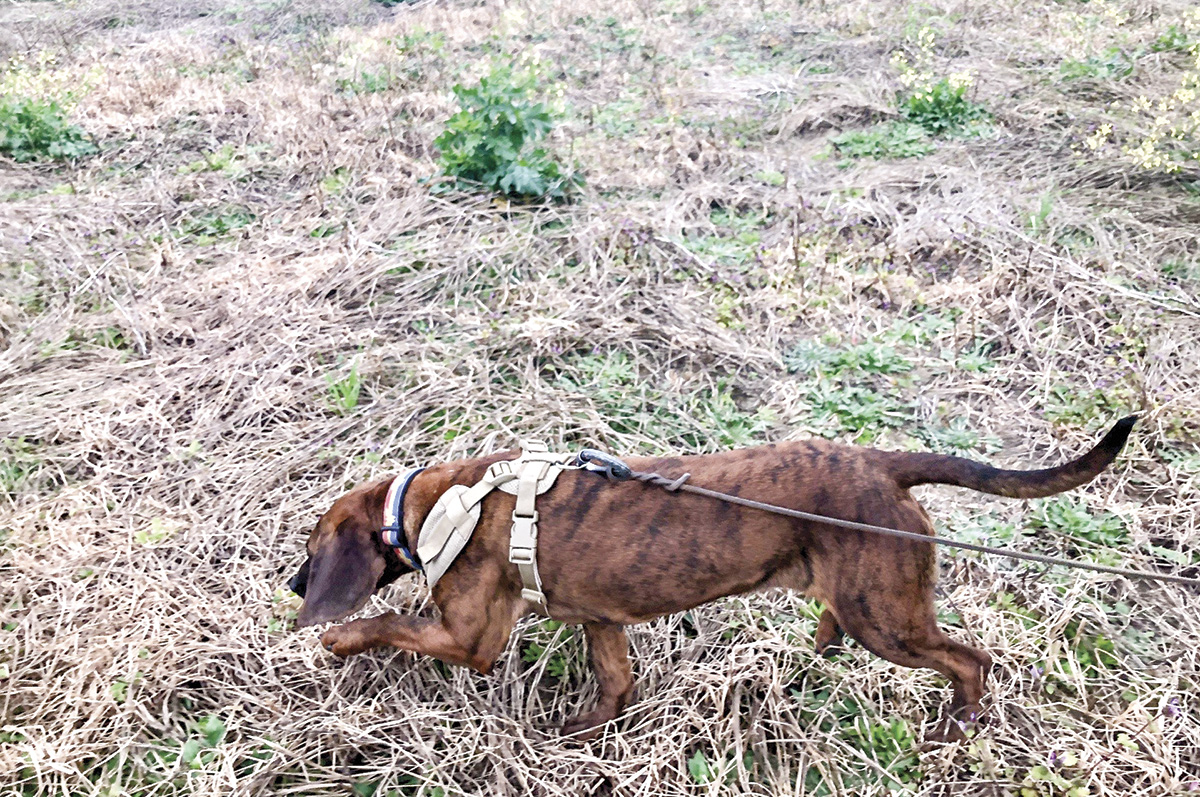 This dog in training (Raya) is searching a 1-acre field in search of a potato planted with bacterial ring rot. Photo provided by Andrea Parish.
This dog in training (Raya) is searching a 1-acre field in search of a potato planted with bacterial ring rot. Photo provided by Andrea Parish. The dogs learned that odor in two weeks, but it took humans about 16 weeks to learn how to handle the dogs. “We haven’t sold any trained dogs yet,” Parish said, “but we will in the future. Currently, we’re having farms hire us to check for potato diseases. The team – the handler and dog – is most important.” They must be tuned in to each other.
It’s similar to a person with a good bird dog. That person knows their dog and knows when the dog is working seriously or just playing around. “We need to know our dogs and what they are telling us. Dogs have alert behavior – a natural behavior with their interest in odor. They also have indication, which is a human-taught behavior to show us that the odor exists,” she said.
“For instance, my dog Zora [a black lab] points, and Dudley [a yellow lab] lies down. Our dog Raya [a vizsla-lab cross] sniffs out ring rot, and her indication when she smells that odor is to half lie down, as the cue she’s found something,” Parish said.
Sometimes the dog will only alert. “Then the handler must figure it out. The handler is just as important as the dog, to recognize alert behavior and interpret the dog’s indication. “We will eventually sell trained dogs that we’ve been working for a year. The farmer would go through one of our handling schools. Our dogs get certified, just like a bomb dog, to show that the dog can do what we say it can do,” Parish said.
Parish has traveled to several dozen farms from Oregon to Maine to demonstrate how dogs detect all three strains of PVY as well as BRR. Farmers also send potato samples to her for her dogs to test.
“While I was in Idaho for the Idaho Seed Potato Growers meeting, I was asked to go to a farm where they put out 1,500 potatoes for me. Out of those, I found two that had PVY, and those will be verified by the University of Idaho. It took the dog about three hours to find those two potatoes and narrow it down. The dogs go past the ones that do not have that odor.”
“We can check fields, storage bins and samples,” Parish said. The dogs can run through the ventilation tubes under the seed potatoes in storage areas and sniff through the holes to find any infected tubers. Samples can be taken from areas of the pile where the dogs find something, for further checking.
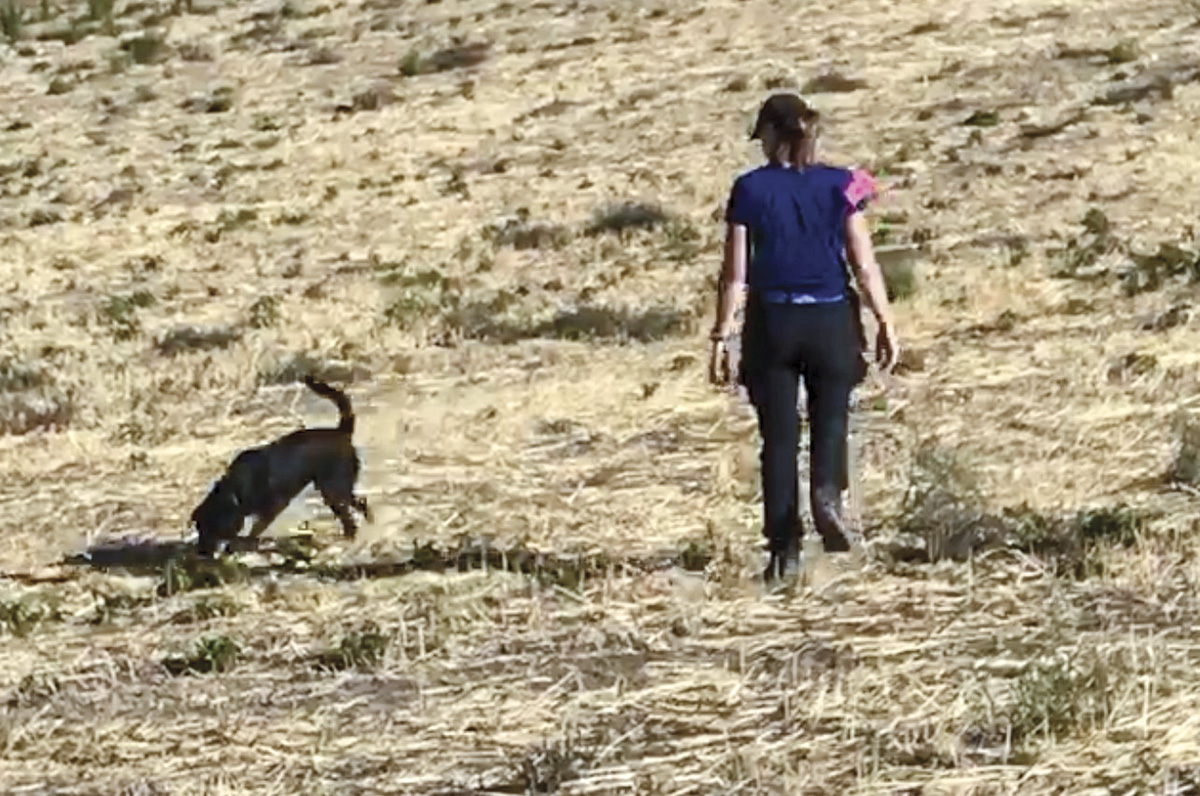 Andrea Parish and her dog train for potato smells in a southern Idaho field. Photo provided by Andrea Parish.
Andrea Parish and her dog train for potato smells in a southern Idaho field. Photo provided by Andrea Parish. The dogs enjoy their work, Parish said, but only about 1% of dogs can do this. While they can all detect odors, most are not interested in showing you what they are finding. “These few are like the top 1 percent of athletes in their skill,” Parish said.
“We often have dogs that we’ve trained on odor, but they don’t work out for what we want because they are not interested in full-time work. Some breeds are better at this job. Any of the hunting breeds have good potential. Hounds are more suitable for tracking rather than for target. I tried to get my hound to be a demo dog, since she had been a drug dog. She knew all the drugs but did not want to learn a new odor.”
At the Idaho meeting, Parish told her audience that dogs are 99% accurate. “If you do testing for potato diseases, you only get about 30 percent accuracy because of your small sample size. With the dogs you are getting a lot more,” Parish said. “For instance, the dogs that check for ring rot can sweep an entire storage unit or truck, like a bomb dog, whereas a farmer can only swab samples. The dog is much more efficient and can check a much larger sample, saving time.”
Parish said her preference is to have dogs check tubers, even though many people think in terms of checking fields. “But the dogs can detect it in the tuber 48 hours after inoculation. It would be best to detect it in the potato before it gets planted and not have the risk; you could start with a much cleaner field. After the plants are about a foot high, the dogs are no faster than the scouts. Before the plants are a foot high, we are significantly faster, but after they get taller, the dogs must walk each row,” she said.
The dogs can detect a variety of strains. “In Idaho this year, 99 percent of PVY was NYM and O-wilga; the dogs are able to find all strains of PVY here, according to the University of Idaho.”
This is just another tool, Parish said. “It won’t replace PCR or ELISA testing, but the dogs are very accurate and efficient.”
Parish’s website for her dog training business is noseknowsscouting.com, with more information and videos showing a dog checking a 40-acre field. “The farmer thought there might be PBY left there from a prior crop, so the dog ran that field and found three areas of PBY. We flagged those areas, and they were tested and found positive, so the farmer didn’t plant in that field,” she said.
A dog can check 40 acres in 20 minutes, and detect an infected 1-inch-high plant from about 80 feet away. Parish has been hired to work with some state seed potato certification programs and will also be helping several seed potato growers in Idaho. ![]()
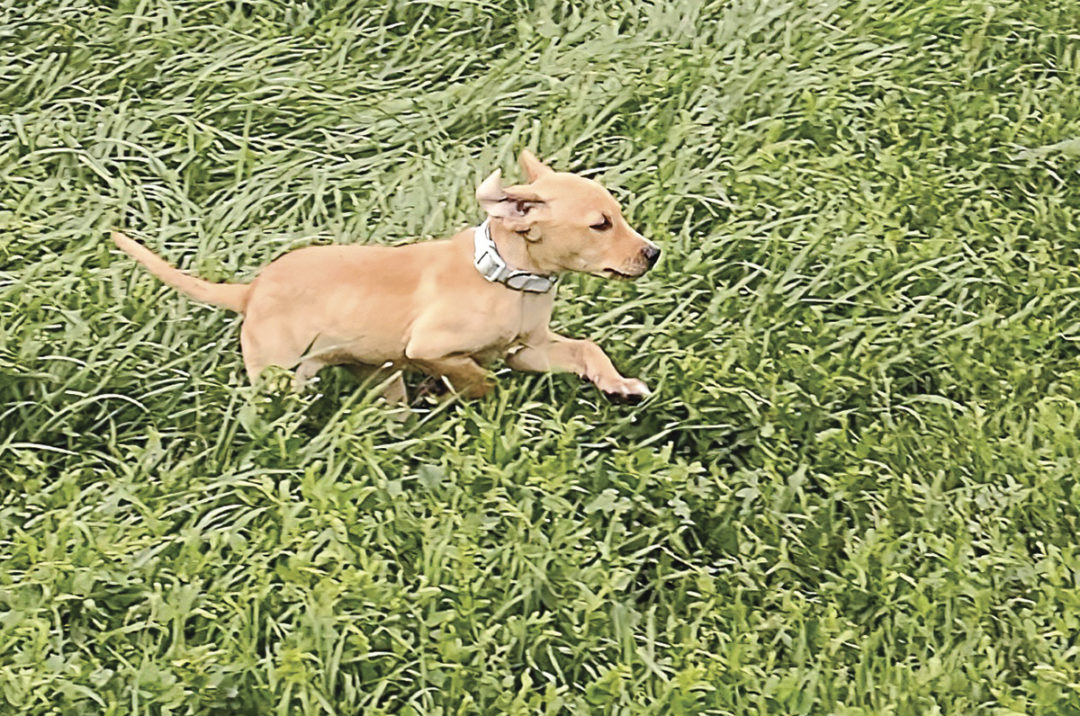


.jpg?t=1687979285&width=640)


